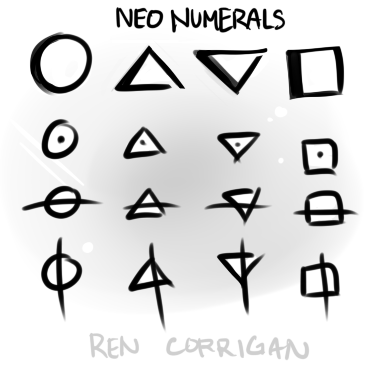
“In Mathematics, you don’t understand things.
You just get used to them.” —John von Neumann
Life takes us on a number of strange paths… and developing the Neonumerals has definitely been one of my most unexpected journeys! I primarily consider myself an artist, and only developed the Corrigan Cube as a way of enhancing my understanding of numbers. It has since proven to me that it has a wide range of utility, and needs to be shared with the world.
The Neonumerals can easily be read as binary, quaternary or hexadecimal without any conversions or calculations.
It all started with counting hexadecimal on my hands. I started counting the one’s place on my right hand’s knuckles (0-15), then holding the 10s place on my opposite hand. This let me effectively count to 256, while also being able to multiply.
I also thought it was fascinating how efficient computers are despite working in binary, and wanted to understand it better. Looking at a bunch of 1s and 0s made my head spin though, and even with hexadecimal… Looking at F’s and C’s next to the Arabic numerals made it impossible for me to try doing calculations. I had to make something I could read and work with, and since Hexadecimal is often used to shorten binary strings of 4, and 16 is conveniently 4²… I made it a cube. Without any real troubleshooting, the Corrigan Cube was born.
In the months since then I’ve been learning its functions, and figuring out how to explain them. Over time I will update this website with information as I also learn more. I have one more numeral system I’m working on that’s base-3 and base-7 which will be put up when it’s more solidified. For this reason, the site is called “Neonumerals” rather than just the Corrigan Cube.
We’re living in an entirely new world compared to when the Arabic numerals were created, and it changes every day…So here are new numbers for a new era! Enjoy!
